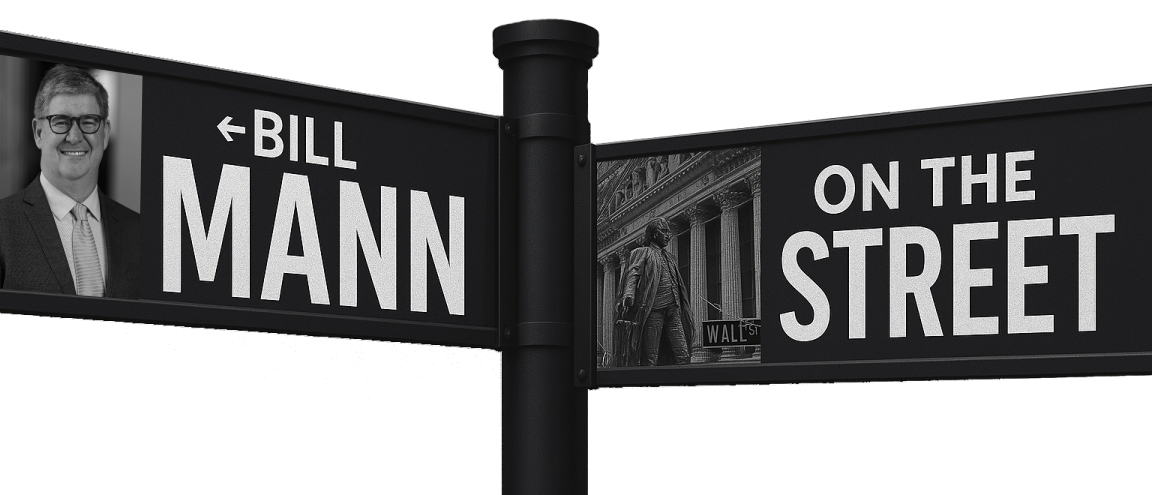“The investor’s chief problem—and even his worst enemy—is likely to be himself.”
—Benjamin Graham
The title comes from the International Emergency Economic Powers Act of 1977, which allows the president to regulate imports if he declares a national emergency. You may have recently heard of this law because it’s the one that President Trump is relying upon to impose tariffs on nearly every country in the world beginning on “Liberation Day.” Here is the language:
Any authority granted to the President by section 1702 of this title may be exercised to deal with any unusual and extraordinary threat, which has its source in whole or substantial part outside the United States, to the national security, foreign policy, or economy of the United States, if the President declares a national emergency with respect to such threat.1
What’s the “unusual and extraordinary threat?” Fentanyl, apparently.
We can quibble about whether the President of the United States has the authority to levy tariffs on goods and services coming into the country. But tariffs do seem to us to be the issue that’s driving much of the market commentary and share prices thus far in 2025.
These are real things. I’m mentioning them because tariffs already have had and in my opinion are likely to continue to have a substantial impact on equity prices, or at least the volatility associated with equity prices.
But here’s another real thing: I don’t think tariffs matter much. Or put another way, history has told us that investors who simply ignored the latest news were likely, as a group, to outperform ones who did not.
I know that sounds borderline reckless, but allow me to pose a question: is there anything that you know or believe about tariffs or the administration’s fiscal policies that are 1) unique, contrary insights and that are 2) financially actionable?
Let’s take the week following “Liberation Day” itself, April 2, in which the US market as measured by the S&P 500 dropped at one point more than 12% and the news included headlines like “Dow tumbles more than 300 points Tuesday as tariff-induced sell-off resumes.”2
Those investors who had decided, say, in February to take some risk off the table and get out of the equity markets probably felt pretty smart on April 8 since the market had dropped more than 18%.3 But there was no signal at all that suggested April 8 was as bad as things were going to get. (Cue Homer Simpson: “As bad as they were going to get so far!”)
A drop of 10% or more historically has happened, on average, once every 1.2 years.4 A drop of more than 15% happens, on average, every 2 years or so.5 So while the market’s performance between February and April may have stunk, in that regard it wasn’t special.
When you consider that over the past 40 years the S&P 500 has increased 3,000%,6 these kinds of downdrafts should be put into perspective. I believe they’re the price of admission to the markets. Generally speaking, they happen because of something real going on in the economy.
In 2023, for example, the market declined more than 10% between July and October when the Federal Reserve began to signal that it would need to keep rates higher for longer.7
Remember that? Remember how you felt? No?
There’s a set of research that you’ll see me quote a lot from an outfit called Dalbar. This one shows a 30-year time period in which equity fund investors underperformed the S&P 500.
The thing that I like (hate) about this one is that it shows a compounded impact for a 214 basis point annual underperformance: more than $800,000 from a starting portfolio of $100k. To me this is catastrophic underperformance when instruments that allow investors to just own a proxy of the S&P 500 are available for very little cost.
I don’t know about you, but I consider $800,000 to be quite a bit of money, especially since it should have been available to investors simply by not doing anything. This is also the conclusion of Morningstar’s annual Mind the Gap report, which showed that in 2024 investors underperformed the very funds they owned by 1.1%.9 May not seem like much, but stack that underperformance year after year and it could add up.
When I worked with the publishing arm of The Motley Fool, LLC, I encouraged investors to keep an investing journal. There were two primary times when I recommended that investors take a few moments to write. First, just before they made a transaction. Could be as simple as “I’m buying shares in Universal Thingamabob for the following 3 reasons; if I’m right it’ll be because of X, and if I’m wrong it’s because of Y.”
These journaling events have to come before the actual trade because the moment the trade is made your brain is already receiving information in the form of share price movements as to whether you have made a good decision or not.
The second primary time is during a period of heightened stress or fear. Research into behavioral finance has long shown that for the average person, loss feels significantly worse than gain feels good. It’s a key component of Prospect Theory, the model that describes why people make suboptimal decisions under stress.10
You can draw the line to see where I’m going, can’t you? If investor behavior causes persistent underperformance and Prospect Theory suggests that we make poor decisions under stress in no small part because the emotional impact of loss is far higher than that of gain, it stands to reason to us that an investor’s ability to withstand that stress, to resist the instinct to react to volatility or to macroeconomic events, can be a far more valuable skill than trying to avoid these downdraws.
In fact, it is my belief that, historically, volatility should be seen as inherent to investing, and has traditionally been accompanied by substantial wealth creation, though it may not seem so at the time. Or as billionaire founder of AQR Cliff Asness put it recently: “high [volatility] if you can stand it is good…” Asness has similarly written a white paper called “The Less Efficient Market Hypothesis” that posits that some combination of indexing and more ubiquitous data have made the markets less efficient over the last 30 years.11 If he’s right, holding through volatile markets should become even harder, both for individuals and the professionals who advise them.
Which brings me to an obvious, if counterintuitive conclusion: weeks like the one following “Liberation Day” are a gift, if only you know how to apply them. No, not in the Vulcan-style “well of course I would be buying” sense—the stock market’s movements themselves suggest that few people were on that particular train.
It’s because they give you a unique opportunity that cannot be reproduced in any other conditions: the chance to memorialize how you feel during the times of great uncertainty. In the same way that “imagine a tiger is chasing you” is way less scary than an actual tiger actually chasing you, giving yourself a journaled reminder of how you felt when your fear of loss was maximized should give you better understanding of your own instincts during other times.

Sources:
1 Congress.gov. “The International Emergency Economic Powers Act: Origins, Evolution, and Use.” Accessed May 9, 2025.
2 Kim, Hakyung and Sean Conlon. “Dow tumbles more than 300 points Tuesday as tariff-induced sell-off resumes.” CNBC. April 8, 2025. Accessed April 25, 2025.
3 ^GSPC from February 19 through April 8.
4 Fonville, Mark. “Understanding market corrections and crashes.” Covenant Wealth Advisors. March 10, 2025. Accessed April 25, 2025.
5 Mitchell, Cory. “A history of stock market percentage declines in charts (15% to 50%+).” Trade That Swing. Accessed April 25, 2025.
6 ^GSPC from May 5, 1985 through May 2, 2025.
7 ^GSPC from July 31, 2023 through October 27, 2023.
8 “Why typical investors underperform.” Osborne Partners. Accessed April 24, 2025.
9 Morningstar. “Mind the Gap 2024.” Accessed April 24, 2025.
10 Kahneman, Daniel and Amos Tversky. “Prospect Theory: An Analysis of Decision Under Risk.” Econometrica. March 1979. Accessed May 9, 2025.
11 Asness, Cliff. “The Less Efficient Market Hypothesis.” AQR. September 3, 2024. Accessed April 25, 2025.
Related Posts

How AI is Shaping the Future of Investing
We can’t go a single day without hearing how artificial intelligence (AI) is turning daily life...

Why Small-Cap Stocks Could Be the Next Big Win
Lately, the stock market has been dominated by a handful of behemoths. Tech giants and household...

Understanding the Difference Between Equal-Weight and Market-Weight Indexes
You've almost certainly heard of prominent names like the S&P 500 Index or the Nasdaq 100. Both...
Interested in more?
Get our popular newseltter delivered to your inbox every month.
Search the Insights Blog
How to invest with us
Click the button below to learn how you can get started with Motley Fool Asset Management









